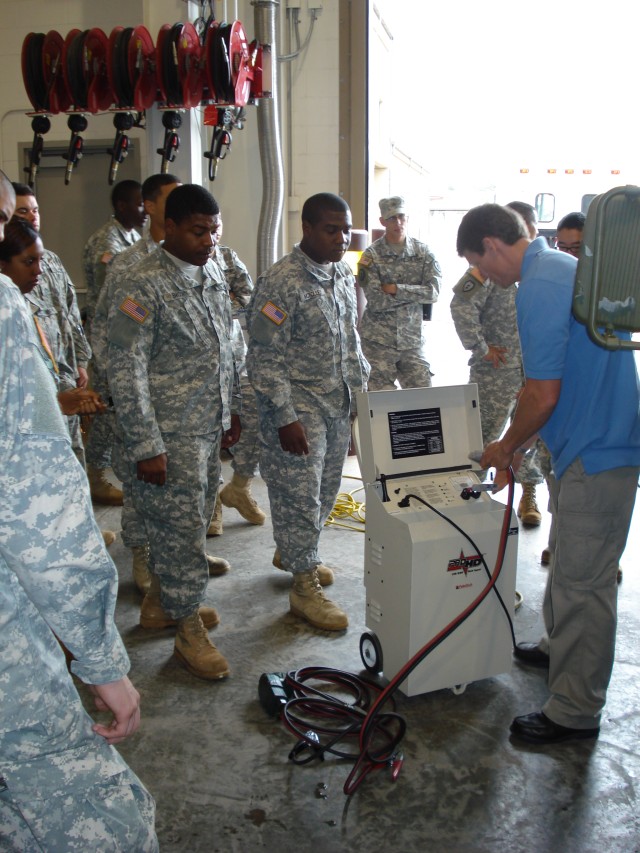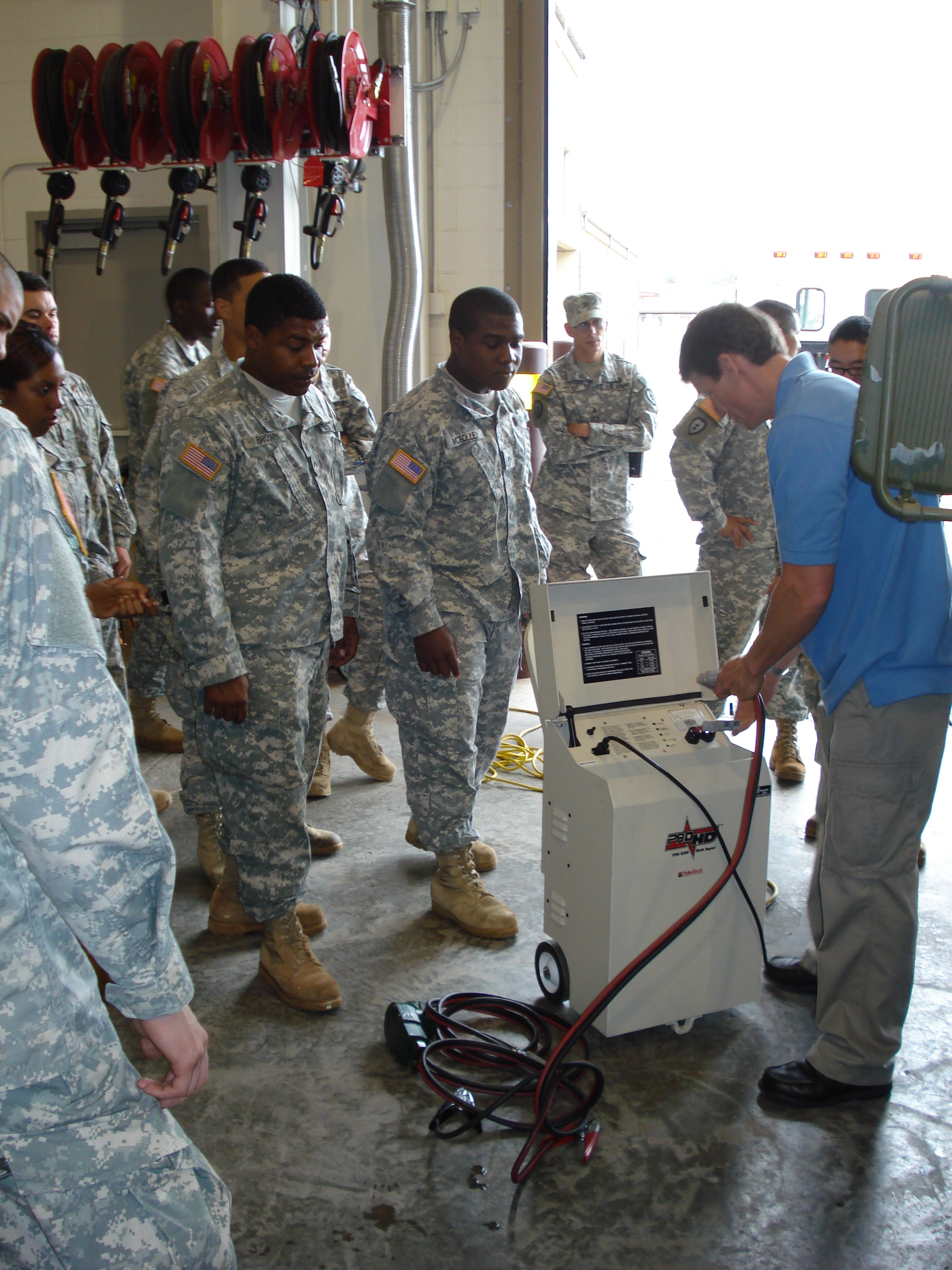SCHOFIELD BARRACKS, Hawaii - The Directorate of Public Works (DPW), Environmental Division, hosted four vehicle battery maintenance and management training sessions at Schofield Barracks and Fort Shafter, recently.
Field support representatives Tom Pigorsh, American Business Development Group, and Roy Johnson, PulseTech Product Corporation, trained 100 military and civilian people on various types of equipment and techniques to maximize the life cycle of batteries used in tactical and nontactical vehicles, generators, golf carts, forklifts and other equipment.
U.S. Army Garrison-Hawaii (USAG-HI) is implementing a mission-focused Sustainable Environmental Management System (SEM) with the help of DPW's Environmental Division.
Alvin Char, chief, Environmental Division, hopes military and civilian organizations will adopt the maintenance and management practices they learned in the training.
"These practices will enhance their sustainability posture and help them achieve top environmental performance by reducing their battery consumption," Char said. "Reducing battery consumption will help organizations free up operational dollars that can be used to support other mission requirements. It also merges financial interests with doing what is right by the environment and the community."
In its 2008-2010 Strategic Sustainability Action Plan, USAG-HI outlines its commitment to the "triple bottom line-plus," which combines mission, environment and community, plus the economic benefits that sustainability provides.
DPW's Environmental Division encourages organizations to switch from using conventional "flooded" lead-acid batteries to absorbed-glass-mat (AGM) type batteries. AGM technology is a "greener," longer lasting and better performing battery technology. However, even without the conversion to AGM, organizations can make their batteries last longer by implementing a simple preventive maintenance program.
The reality is that organizations don't do enough to maximize the life cycle of their batteries. A number of motor pools don't use battery chargers or Soldiers are not trained to use them properly. "Dead" batteries are automatically replaced with new ones without any attempts to recharge them.
DPW's goal is to lower the installation's consumption levels to below the Environmental Protection Agency (EPA) reportable quantities. Char said achieving that goal will require everyone's participation.
"Even smaller organizations need to take this issue to heart because one small positive act multiplied hundreds of times produces immense benefits," he said.
Left behind equipment (LBE) or vehicles stored for long periods of time are invariably inoperable when needed, thereby affecting a unit's readiness. USAG-HI units have a great opportunity to achieve and maintain optimal performance using solar chargers and by performing proper maintenance. Cost savings and enhanced unit readiness increase greatly by embracing solar technology for long-term outdoor storage of equipment and vehicles.
AGM battery technology is being incorporated in almost all of the Army's original equipment manufacturer production lines, and some of the diagnostic and charging systems are now part of the standard Army tool set and forward repairs system.
To reap maximum benefits of the triple bottom-line-plus, organizations must enforce a battery maintenance program and ensure Soldiers are provided proper training to achieve the full potential of these new technologies.
DPW's Environmental Division will host another training series on battery management later this summer.
(Editor's Note: Chantal Leonard is a contractor for Environmental Science International, Inc.)


Social Sharing